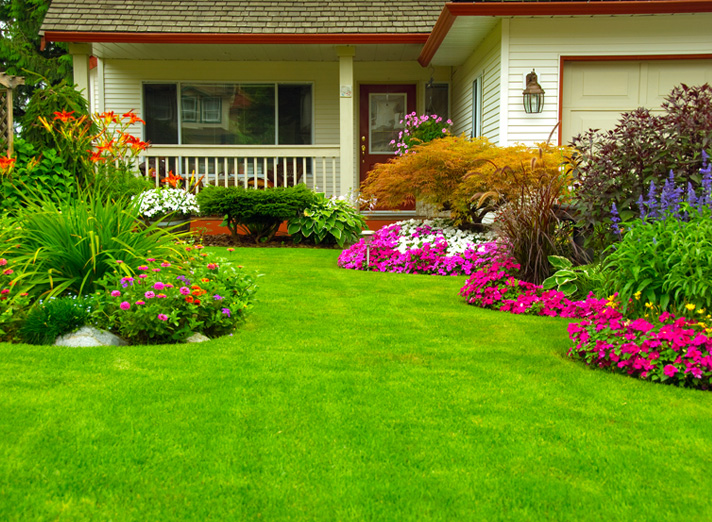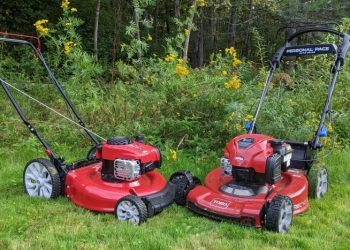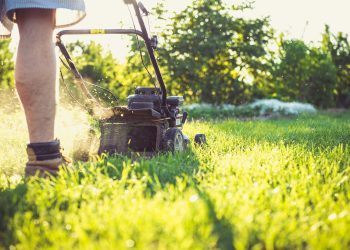Table of Contents
The overall landscape of your home is the first aspect any passer-by will see. With this in mind, it’s understandable why landscaping is big business.
If you’re considering selling or renting your home, the first impression for a would-be renter or buyer will be one of the defining factors of whether they choose to open their wallets for you or not.
Above all, landscaping begins with your lawn. And, the overall quality of your property truly depends on a healthy and well-kept lawn, as this translates to the look and feel of your home as well.
The following guide will assist you in properly maintaining your landscape well into the future.
Simple Clean-Up
Just like your home, or your room when you were a teenager, your yard needs regular cleaning as well.
Spring is the best time to get out in the yard and begin the process of cleaning up the remnants of fall and winter. You might have a lot of leaves on the ground, fallen tree limbs, or even some erosion issues that need fixing. The first step is to take note of all the problem areas around your property and get to cleaning up.
Springtime is also a great time to get out and rid your open spaces of invasive weeds. You can pull these by hand, or use herbicides. While natural herbicides like saltwater sprays and vinegar solutions are great methods that are environmentally sound, some homeowners prefer chemical herbicides for large weed growth.
Chemical herbicides, or any chemical treatment, must be handled with care. For instance, some weed killers and herbicides such as Roundup are known to cause cancer in some people. In fact, there are many class-action lawsuits due to the development of cancer from these herbicides.
Creating a Healthy Lawn
Now that you’ve cleaned up your yard, and you’ve exposed the raw grass and ground from under leaves and fallen debris, it’s time to get your lawn back into shape.
With the following basic process at hand, you’ll be on your way to a healthy lawn in just a couple of months.
Test the Soil
If you’re doing any planting, even with grass seed, you’ll want to ensure that your soil is properly balanced and healthy for plant growth. Purchase a soil kit to test the nutrient and pH level of your soil. This will check for proper nutrient dispersion, and you’ll be able to tell if your soil is acidic or alkaline.
Aerate
This isn’t every homeowner’s favorite method, but the benefits far outweigh the labor you’ll spend aerating your lawn.
Aeration is the process of removing soil compaction by making holes in your lawn, and it should be done once a year. This opens your lawn up to receiving air, water, and nutrients down to the grassroots. Though the process can be laborious, especially if you have a big yard. Using a core aerator that removes dirt cores at a depth of 3 inches is the recommended tool for the job.
Dethatching
Between the soil and the grass, there is a layer of what is referred to as thatch. This is the layer of living and decomposing organic matter that exists just under the surface of your lawn.
Thatch is essential for proper nutrient dispersion within the soil, but too much can make it hard for your lawn to receive air, water, and nutrients. Digging up patches of grass covering thick thatch with a spade is common, or you can use a thatch rake for larger areas. As a rule of thumb, thatch should only be about a half-inch thick. Anything more needs to be removed.
Fertilize
Most grasses are ideally fertilized in early spring, as is the case with most cool-season grasses. For warm-season grasses, wait until your grass is in a prime growth stage, typically by mid to late spring.
Ideally, you should also use a slow-release fertilizer. This will ensure that your lawn absorbs the fertilizer over time and that you won’t incur fertilizer burn over your lawn.
When it comes to maintaining a healthy lawn, the amount of maintenance and upkeep you perform will directly relate to your lawn’s overall beauty. Following a step-by-step process will ensure that you complete every stage of caring for your lawn, and be able to enjoy it in all seasons.








